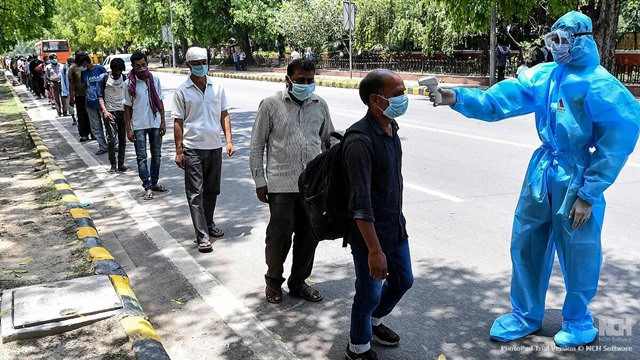২১ অগ্রহায়ণ ১৪৩২
Coronavirus spreads again in India, Thousand plus detected
29 May 2025 14:05 PM
NEWS DESK
The number of COVID-19 cases in India has been steadily increasing, with Maharashtra, Karnataka, Tamil Nadu, and Kerala accounting for the majority of new infections. As of Tuesday night, the nation had 1,010 active cases, according to the Health Ministry.
Notably, a new virus subvariant, NB.1.8.1, was found in a Tamil Nadu sample and sent to India's genome sequencing consortium, INSACOG, for analysis. Despite the low number of cases, public health experts have cautioned, pointing to similar rising trends in a number of other nations. This recent increase is the result of numerous factors.
Waning immunity from previous infections and vaccinations is a big worry. People, particularly the elderly and those with compromised immune systems, are more susceptible to reinfection as immunity wanes over time.
Furthermore, the evolution of the virus is demonstrated by the appearance of new subvariants such as NB.1.8.1, a descendant of the JN.1 lineage. Nevertheless, there is currently no proof that this variation is directly related to the severity of the afflicted patients' illnesses. Additionally, the shifting seasons are probably contributing as well.
Like other respiratory pathogens, SARS-CoV-2 spreads effectively in colder or more humid conditions. Seasonal flu and other viral infections have increased in a number of Indian cities, suggesting that the climate is favourable for the spread of COVID-19.
Notably, the early arrival of the monsoon in many regions of the nation also makes the weather more humid because of the higher air moisture content. According to an Indian Express report, the decline in widespread testing and genomic surveillance is another important factor.
Routine testing and genome sequencing have been drastically reduced since COVID-19 was designated as endemic. By delaying the discovery of novel variants and outbreaks, this decreased monitoring may permit infections to spread covertly.
Furthermore, the loosening of public health regulations like mask requirements and social distancing is probably making it easier for the virus to spread, especially among vulnerable populations.
Kerala accounts for 43 percent of active cases nationwide, followed by Maharashtra with 21 percent. Delhi, Gujarat, and Tamil Nadu make up smaller proportions, at 10, 8, and 7 percent, respectively.
Six reported deaths in Maharashtra, Kerala, and Karnataka since May 19 have not yet been linked to COVID-19. In order to better monitor the spread, the Health Ministry has announced plans to increase testing among those who exhibit symptoms over the course of the next two weeks.
It has been recommended that people over 60 and those with underlying medical conditions take preventative measures, such as wearing masks in crowded areas, keeping clean, and isolating themselves if symptoms appear. At the moment, JN.1 and BA.2 are the predominant strains that are circulating in India.
One Variant of Interest (JN.1) and seven Variants Under Monitoring, including NB.1.8 and LF.7, are being closely watched by the World Health Organisation. As of right now, no variants have been identified as Variants of Concern.



















Comments Here: